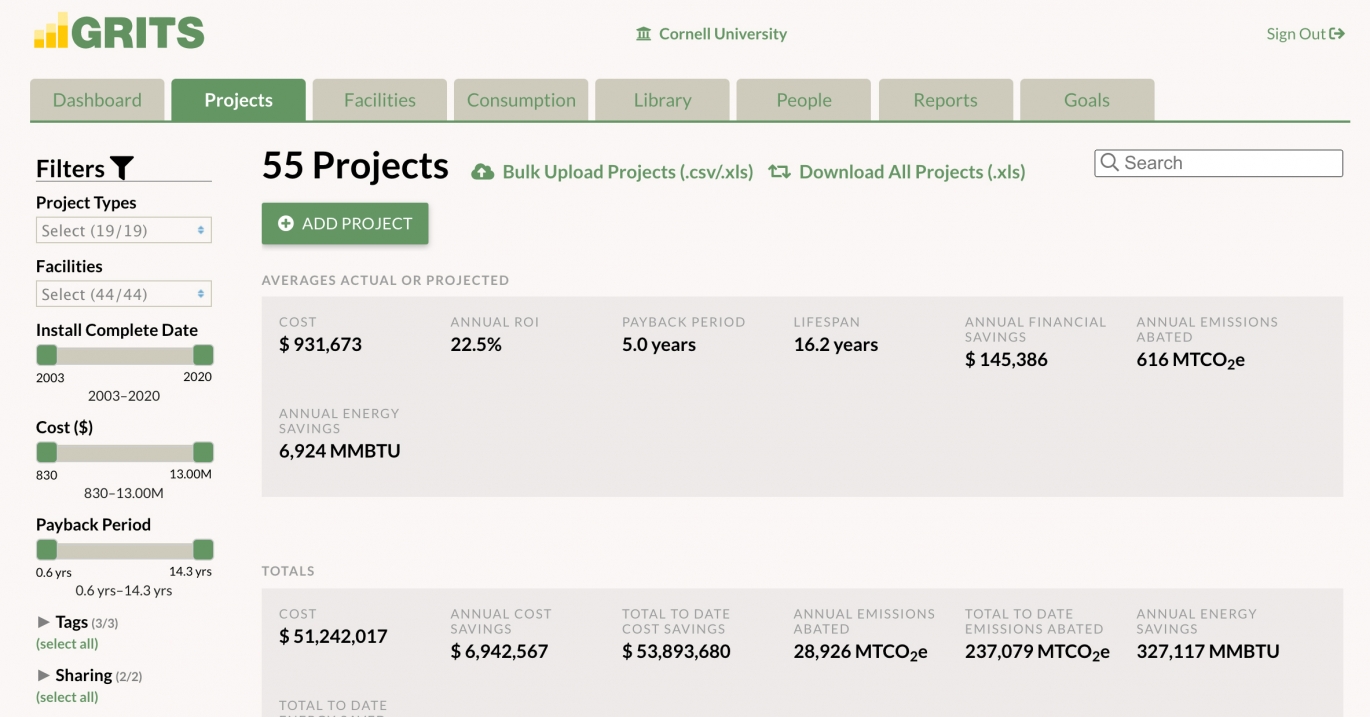
Deep investments in energy efficiency at Cornell have led to financial and energy savings and reductions to our carbon footprint. The University has invested in a decades-long Energy Conservation Initiative (ECI) with staff who implement carbon-saving measures such as lighting, heating, and other energy upgrades. A new portal captures individual projects and their collective impact.
The ECI program was launched in 2000 at Cornell University. Since then, staff have worked diligently to implement several major phases of work including lighting upgrades, heating and cooling system advancements, and changes to building controls that allow for finer tuning of energy use throughout the day and year. But in recent years, the team needed a better way to capture overall savings across projects and realized it was time to invest in a tool that allowed for broader analysis of ECI impacts.
In collaboration with the Campus Sustainability Office, the ECI team decided to invest historical and future project data about energy conservation projects into the Green Revolving Investment Tracking System, or (GRITS). GRITS is an online web application that allows organizations to track and calculate project-level energy, financial, and carbon data managed by the Sustainable Endowments Institute, nonprofit organization engaged in research and education to advance sustainability in operations and endowment practices.
Cornell's new dashboard includes project summaries and historic savings calculators for return on investment (ROI), payback period, carbon savings, energy savings, and more.
The Campus Sustainability Office subsequently created a new landing page to capture the history of the ECI program and project highlights such as the recent Lighting Controls LED Replacement Project completed in 2019 which replaced 156,000 four-foot fluorescent tube lamps with more energy-efficient lighting across a significant portion of campus buildings. The page also captures analytics from GRITS included a dashboad of cumulative savings, and links to individual projects implemented to date.
Energy efficiency projects are an easy investment. We can save Colleges and Units money in the long-term, and drastically reduce our carbon footprint to help reach neutrality by 2035. - Cole Tucker, Energy Engineer, Facilities & Campus Services
The teams hope the new resources help incentivize greater adoption of ECI projects across campus by showing the postive rate of financial return and realized carbon savings. "Energy efficiency projects are an easy investment. We can save Colleges and Units money in the long-term, and drastically reduce our carbon footprint to help reach neutrality by 2035," said Cole Tucker, an Energy Engineer on the ECI team who helped create the Cornell GRITS dashboard.
"We hope these new resources, including the GRITS summary and the landing page for projects, helps illuminate why these projects are a sound investment of University dollars."
The ECI program's motto is "The cheapest and cleanest energy is that which is not used," a principle also outlined in the Cornell Climate Action Plan. As the new dashboard and project highlights show, using energy efficiently, conserving energy and materials has reduced Cornell's energy use and greenhouse gas emissions. With future continued investments in energy conservation, the University can ensure the campus is prepared for renewable energy power and operating as efficiently as possible.
